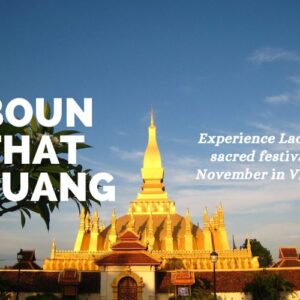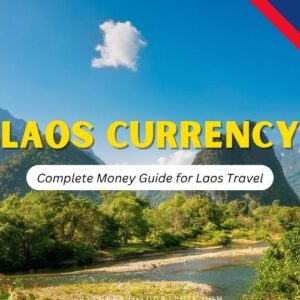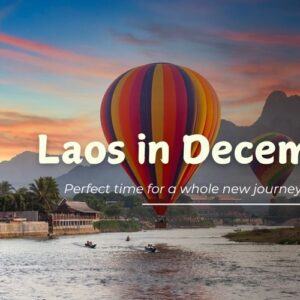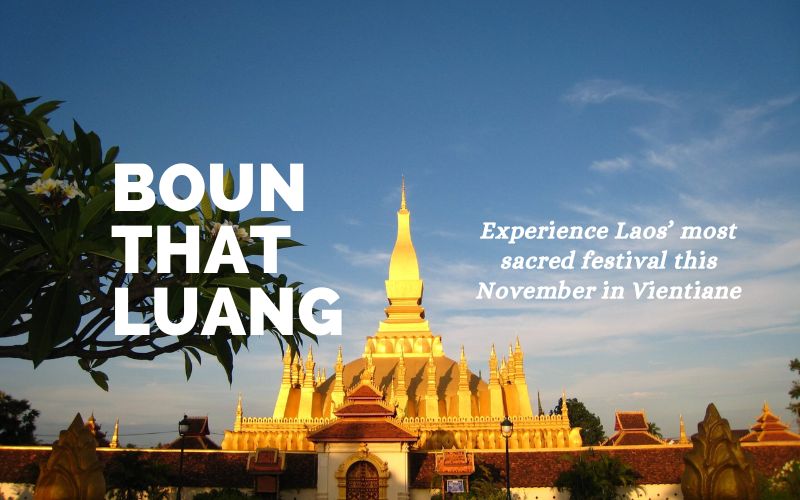
Boun That Luang is a notable cultural and religious festival that is held annually in Vientiane, the capital of Laos, in November. Boun That Luang allows Laotians to express their devotion to That Luang, the national symbol, and the holiest Buddhist monument in Laos.
As a multiday celebration, all visitors will participate in their religious experience of worship, beginning with incense offerings and chanting, and possibly observing the palanquin processions, as well as participating and watching a large number of cultural and fair like experiences which would result with lively street festivals. In addition to the popular religious significance of Boun That Luang, it is also an opportunity to connect with and learn Laotian traditions and culture. Let’s go through this article to discover this interesting festival.
Overview on Boun That Luang
Time
Boun That Luang is recognized as the pre-eminent religious and cultural festivals in Laos, occurring every November during a full moon according to the Buddhist calendar. Tens of thousands of Buddhist devotees and tourists will participate in these sacred rites and festive celebrations.
- Upcoming editions:
- 2025: November 11–13 (tentative, to be updated)
- 2026: November 1–3 (tentative, to be updated)
- 2027: November 20–22 (tentative, to be updated)
(Dates vary by year depending on the lunar calendar and should be reconfirmed closer to the event)
Location
The festival takes place at Pha That Luang (Golden Stupa), the most revered Buddhist monument in Laos, it can be found approximately 4 km northeast of the Vientiane city center.
Boun That Luang is not simply just another Lao festival, it is a festival of the civilized Laotian people which belongs to the entire nation, a celebration of their culture, unity and identity.To tourists in Laos, this is a unique opportunity for tourists to witness and participate in local sacred Buddhist religious rituals and to take part in exceptional cultural experiences that will not be available any other time in the country.
History and Origin of Boun That Luang
The Boun That Luang festival is derived from Laos’ most revered structure, the Golden Stupa That Luang, which dates back at least to the 3rd century, when it was believed to be constructed as one of the first Buddhism temples, until it was reconstructed by King Setthathirath in the 16th century in the reconstructed style of Lao architecture. After being destroyed and restored many times throughout a number of historical events, namely wars and invasions, That Luang still maintains an important geology in the mind of the Lao people.
The Boun That Luang festival was created as a religious occasion to recognize this sacred site, and has since developed into the largest festival of Laos’ calendar year – a testament not only to the Lao people’s commitment to and belief in Buddhism, but of their national pride.
Cultural and spiritual significance
Boun That Luang clearly illustrates the strong link between Buddhism and the spiritual being of the Laotian people. The festival is a time to recognize and remember the Buddha. It is also a mark of the communal spirit of community, a time for people to honor, recognize, and remember their ancestors, and to express commitment to national beliefs. For the people, it is a time for purification of the soul, and to pray for peace, prosperity, and well-being in the new year.
For international visitors, Boun That Luang is an opportunity to gain a deeper understanding of Lao traditions and culture – a peaceful country that values tradition and lives slowly but colorfully. The festival also helps to consolidate the position of That Luang Stupa as a national symbol, while affirming that Buddhism is not only a religion, but also a strong spiritual bond of local people.
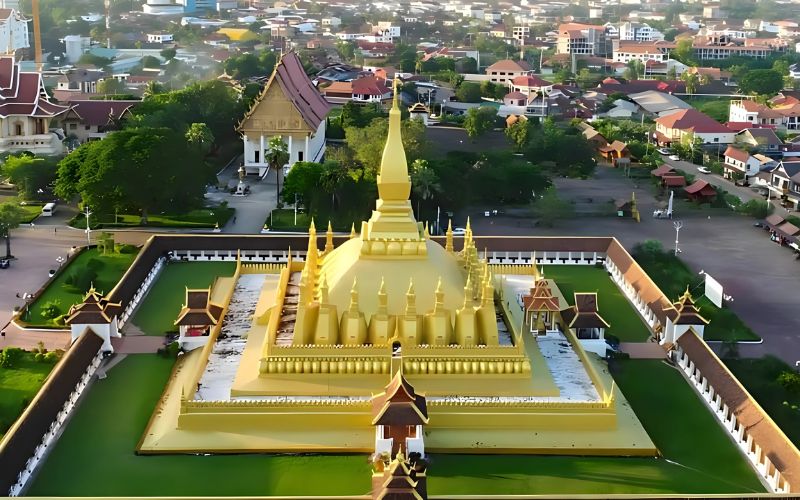
That Luang Stupa
Main activities during the That Luang festival
The That Luang festival usually lasts for about 3 main days, the festive atmosphere has started from the previous days when people from all over flock to Vientiane to prepare for the biggest event of the year. Each day has its own rituals and activities that combine the solemnity of religion with the excitement of community life.
Day 1: Candlelight Procession
The festival commences with a respectful and colorful ceremony of a candlelight procession that encircles the golden stupa of That Luang. Thousands of pilgrims and visitors dressed in traditional attire carrying lotus flowers, candles, and incense, walk around the sacred structure. This ceremony has a beautiful and spiritual feel, as the grounds of the stupa illuminate with the glow of many candles and the sound of prayers for peace greets the evening. In the eve of the festival, temples in Vientiane will hold ceremonies to pray and officially open the festival.
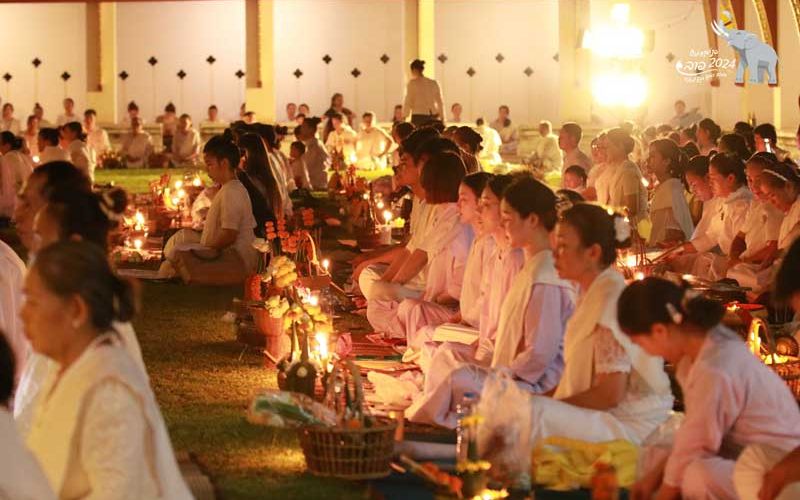
Candlelight procession featuring wax castles
Day 2: Main Celebrations
The second day consists of the heart of the festival’s cultural and spiritual activities. Visitors can have a close look into sacred chanting, participate in fairs and temple festivities, and also enjoy traditional dance and folk music. The entire city comes alive with activity around That Luang as a unique liberalism of religious devotion and community joy is expressed. This day symbolizes the peak of local gathering, as people from all over the country and abroad come together to celebrate beliefs.
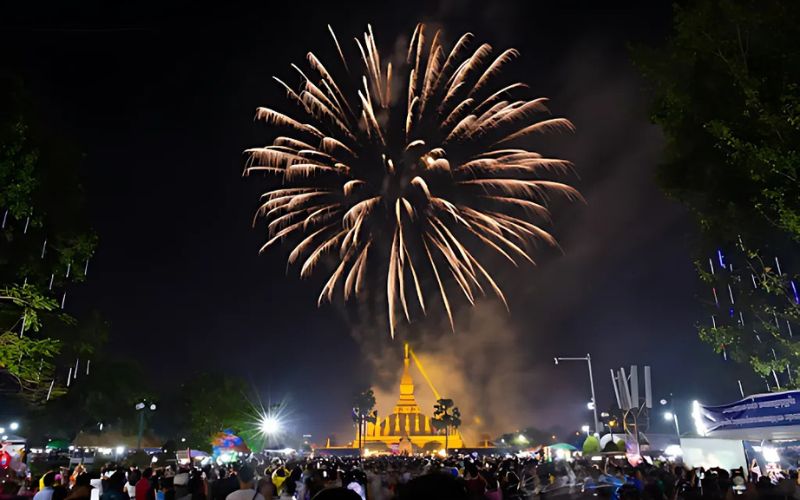
Lao people Celebrate That Luang Festival
Day 3: Alms Giving and Reflection
The last day is centered around the spiritually significant Alms-giving Ceremony (Tak Bat), which is one of the most religiously significant Buddhist rituals in Laos. Over 1,000 monks gather in front of That Luang to receive gifts of sticky rice, fruits and other foods from local people. This almsgiving is, in part, a spiritual reflection and respect towards Buddhism. The day ends with feelings of peace and togetherness as the festival ends with cultural exchange and community-building efforts in the spirit of togetherness and devotion.
Generally, each day of the festival is distinguished in some way: from the ritual and solemnity of the procession and the alms ceremony to community fun in the fairs and artistry. This combination provides an experience that is distinctive for any visitor and one you will break hard to forget when you experience it.
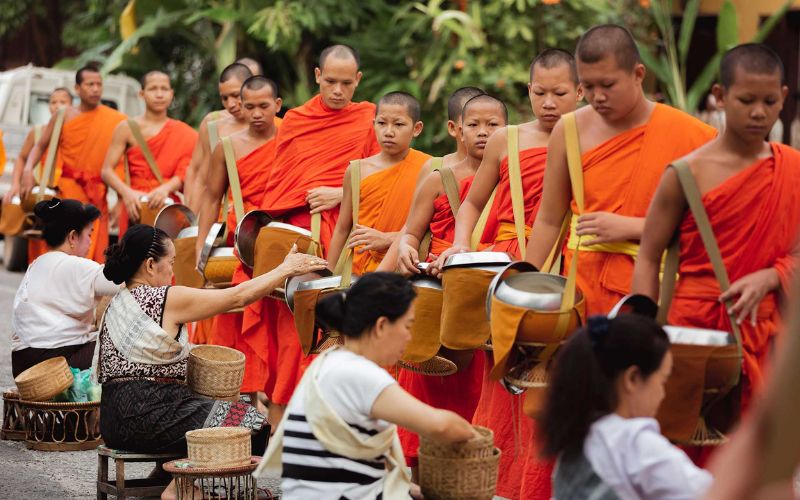
Almsgiving ceremony
Practical Information for Travelers
How to Get There
- By Air: The closest airport to Vientiane is Wattay International Airport (VTE), which has flights connecting to many cities in Southeast Asia, including Bangkok, Hanoi, Ho Chi Minh City, and Phnom Penh.
- By Land: It is also possible to visit Laos by land, either through the Friendship Bridge from Nong Khai (Thailand) or by regular buses, minivans, or trains (from Bangkok or Udon Thani) to Vientiane.
- In Vientiane: Tuk-tuks, taxis, or ride-hailing applications can get you there from the city center in approximately 10-15 minutes.
Where to stay during festival
During the festival, accommodation in Vientiane gets booked quickly, so it’s best to reserve early. Options include:
-
Luxury: Settha Palace Hotel, Crowne Plaza Vientiane
-
Mid-range: Lao Poet Hotel, Salana Boutique Hotel
-
Budget: Mixok Inn, Barn1920s Hostel
Most accommodations are within a short drive to Pha That Luang, ensuring easy access to the festival.
Notices for Travelers
For tourists, participating in Boun That Luang is not simply to see a festival but also a journey to deeply explore Lao culture and spirituality. Visitors should be present early in the morning to witness the alms-giving ceremony – one of the most beautiful and sacred rituals of Buddhism. This is a rare opportunity to directly observe how religion blends with the daily life of the people here.
When you participate in the festival, I suggest you dress somewhat appropriately and modestly simply to be respectful of the local people. Furthermore, you should allow yourself to get swept up in the markets that offer a lot of traditional cuisine including laap (finely minced meat salad), aromatic sticky rice or Tam Mak Hoong (Lao papaya salad) and many types of handicrafts that would be nice to take home as souvenirs.
After the main ceremonies, you may be able to combine some best-known locations in Vientiane such as Patuxay Triumphant Arch, Sisaket Pagoda, or the night market along the Mekong River to get a feel for capital city life.
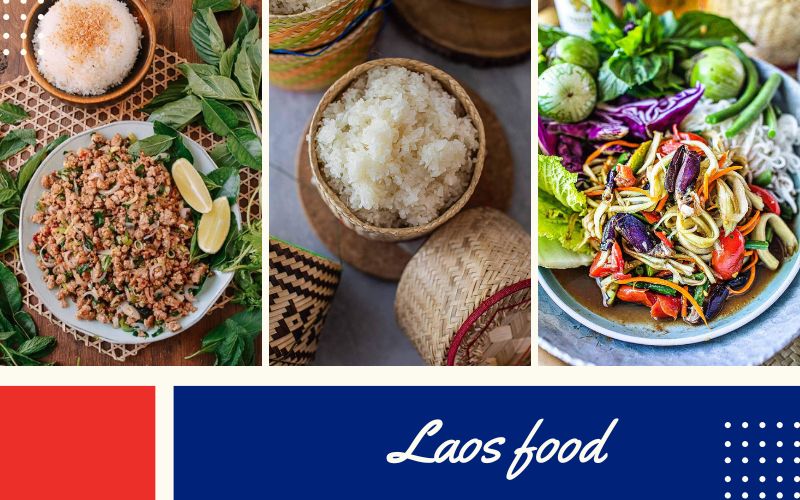
Traditional Lao Foods
Suggested combined itinerary
Short-term itinerary
If you are considering going to the Boun That Luang festival, you can extend your trip to combine other destinations. In just one day, you could go to the festival in the morning, tour Patuxai monument and Wat Si Saket, then check out the night market along the Mekong River river bank. If you had two or three days, you could head out to Nam Ngum Lake (its about 1 to 1.5 hour drive from Vientiane) for some quiet scenery of mountains and rivers and see some beautiful islands and observe people’s ways of life.
>>> Check out Vientiane Classic Tour 3 Days for a complete experience.
Long-term itinerary
With a 4-5 day itinerary, you can combine Vientiane and Luang Prabang – the ancient capital recognized by UNESCO as a World Cultural Heritage. Here, you will visit the Royal Palace and explore the majestic Kuang Si waterfall. If you have more time, visit Champasak in southern Laos to admire Wat Phou – another heritage building with a strong historical and religious imprint.
>>> If you would like to continue after the Boun That Luang festival, consider the Classic Discovery of Laos in 7 Days, where you can be part of the festival and continue your journey discovering the unique culture and nature of Laos.
Boun That Luang is a great opportunity to experience spiritual culture and explore the vibrant life of the capital Vientiane. If you want to combine this festival in your journey to explore Laos, please contact us immediately for advice and to design the most complete trip.
Read more:
